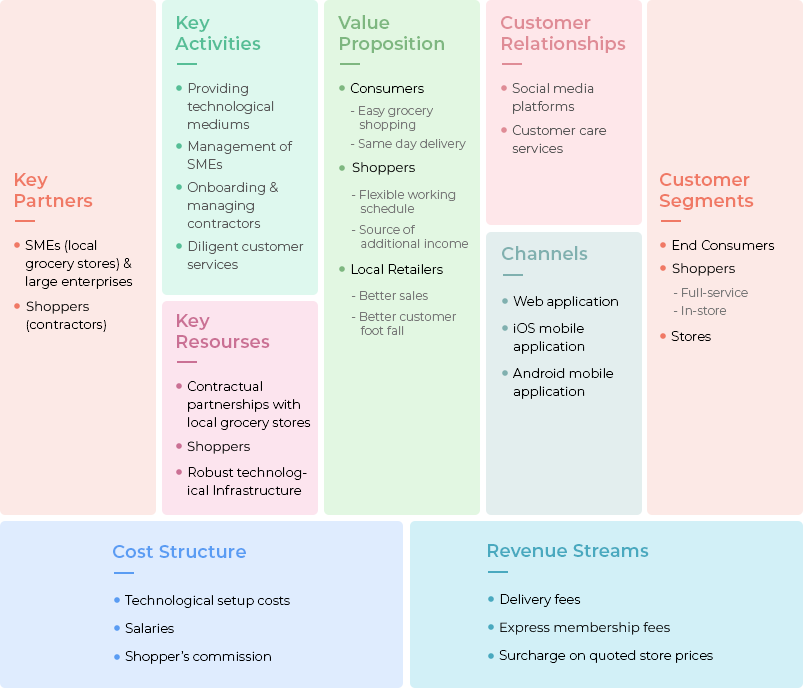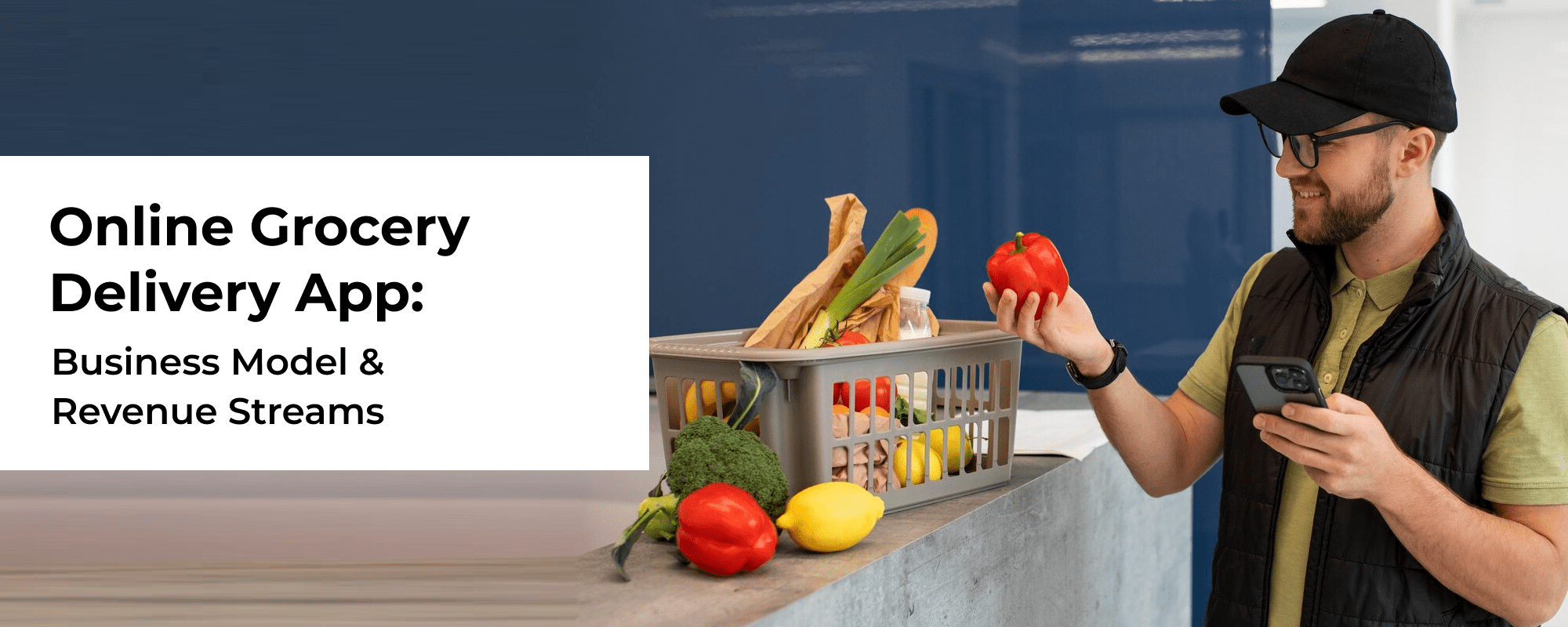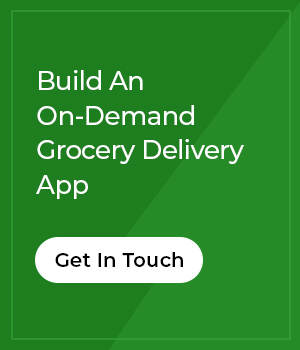Last Updated: 06th June, 2023
The surge in demand for grocery eCommerce services due to the COVID-19 pandemic has led to a significant uptick in the development and popularity of grocery delivery apps. Many entrepreneurs are now looking to capitalize on this trend by launching their own grocery delivery apps. To gain insights into effective customer retention strategies and understand the business model, revenue streams, and features essential for such apps, let’s delve into a general overview.
Table of Contents
- Understanding the Customer Strategy
- Decoding the Business Model of Grocery Delivery App
- How Grocery Delivery Apps Work
- Revenue Model of Apps to Deliver Grocery
- Features that you Should Integrate while Creating a Grocery Delivery Platform
- Building a Grocery Delivery App
- How Much Does it Cost to Build an Grocery Delivery App
- FAQs
Understanding the Customer Strategy
The Unique Selling Point (USP) of this business model is to deliver grocery products to the customers’ doorsteps as early as possible. Grocery delivery apps typically employ a multi-tiered customer strategy to bridge the gap between consumers and suppliers. These tiers typically involve:
- Retail Partners: Grocery delivery apps establish partnerships with various registered stores. These stores list their products on the app’s platform, allowing customers to browse and purchase groceries seamlessly.
- Delivery Personnel: These individuals, often contractors or gig workers, fulfill orders placed by customers. They receive notifications of orders through the app, collect items from partner stores, and make timely deliveries to customers’ doorsteps.
- Customers: The end-users who place orders for groceries through the app. They enjoy the convenience of selecting items from multiple stores, scheduling deliveries, and making payments online.
Decoding the Business Model
Grocery delivery apps typically operate on a blend of gig economy, eCommerce, subscription, and aggregated business models. These models facilitate seamless transactions between customers, delivery personnel, and retail partners.

How Grocery Delivery Works
For a typical grocery delivery app, the process is straightforward:
- Location Access or Manual Entry: Users allow access to their location or manually input their home address. The app then lists nearby local stores.
- Product Selection and Payment: Users browse through a wide range of items, make selections, proceed to checkout, and choose a date and time for delivery. Payment is made securely through the app.
- Notification to Shoppers: Once the order is placed, shoppers (contractors) receive a notification via the app. They begin collecting the items as per the order and prepare it for delivery.
- Payment Processing: Shoppers initiate payment by swiping a prepaid debit card issued by the app. Alternatively, users can opt for self-pickup directly from the store by scheduling a convenient time.
Order Economics: Revenue Model
Here are the revenue streams typically adopted by grocery delivery apps:
- Delivery Fee: Apps usually charge a delivery fee for each order placed, with variations based on delivery time and minimum purchase requirements.
- Partner Payments: Partnering with stores and supermarkets generates revenue through commissions per order and partnership fees.
- Markup Fee: Apps may earn a markup fee based on the net cost of items sold through the platform. Some stores may list products at higher prices, with the additional revenue going to the app.
- Service Fee: A compulsory service fee is often charged on every order, along with a mandatory tip for delivery personnel.
- Membership Fee: Offering an annual membership with perks such as free deliveries for orders above a certain value generates additional revenue.
Features to Integrate
Successful grocery delivery apps prioritize user-friendly features across different categories:
- Customer Features:
- User registration
- Search and filtering options
- Multi-store product selection
- Unified shopping cart
- Payment wallet
- Delivery scheduling
- Order tracking
- Return and replacement options
- Shopper Features:
- Dashboard for order management
- Geolocation and route optimization
- Acceptance/rejection of orders
- Communication tools with buyers and sellers
- Seller/Vendor Features:
- Store and product listings
- Inventory management
- Financial tools such as seller wallets
- Operation timing management
- Admin Features:
- Commission management
- Reporting and analytics
- Approval/rejection management for sellers and delivery staff
- Content management system (CMS)
- Currency and language management
Building the App and Cost Estimation
Developing a grocery delivery app involves significant investment in terms of time and resources. It’s essential to start with a minimum viable product (MVP) and scale it over time. Costs vary depending on factors like features, platform, design complexity, and development team rates. Ready-made solutions can also be customized to meet specific business requirements.
Growcer, an MVP grocery delivery solution, comes equipped with web interfaces for admin, buyer, and seller and mobile apps for buyers and delivery staff. It is an ideal and practical solution and can also adapt to other business requirements. Our team of experts can also be hired to build a custom shoppers app.
Launch a Grocery Marketplace with Growcer
FAQs
Common questions addressed include similar apps in the market and customization options for specific functionalities. Users can explore solutions like Growcer for launching their own grocery delivery platforms.
Q1. What are some apps that are popular in grocery delivery market?
Ans. In the grocery delivery market, a lot of apps have similar business model. These include FreshDirect, Instacart, PeaPod, Shipt, and more.
Q2. Does Growcer’s base copy build a platform that is exactly similar to popular players in the industry?
Ans. Growcer is a readymade solution that can be enhanced to function like major players in grocery delivery app segement. A few unique functionalities can be incorporated in Growcer’s base copy through customization at an additional cost.


